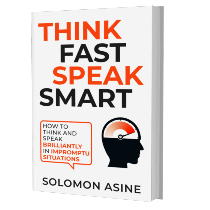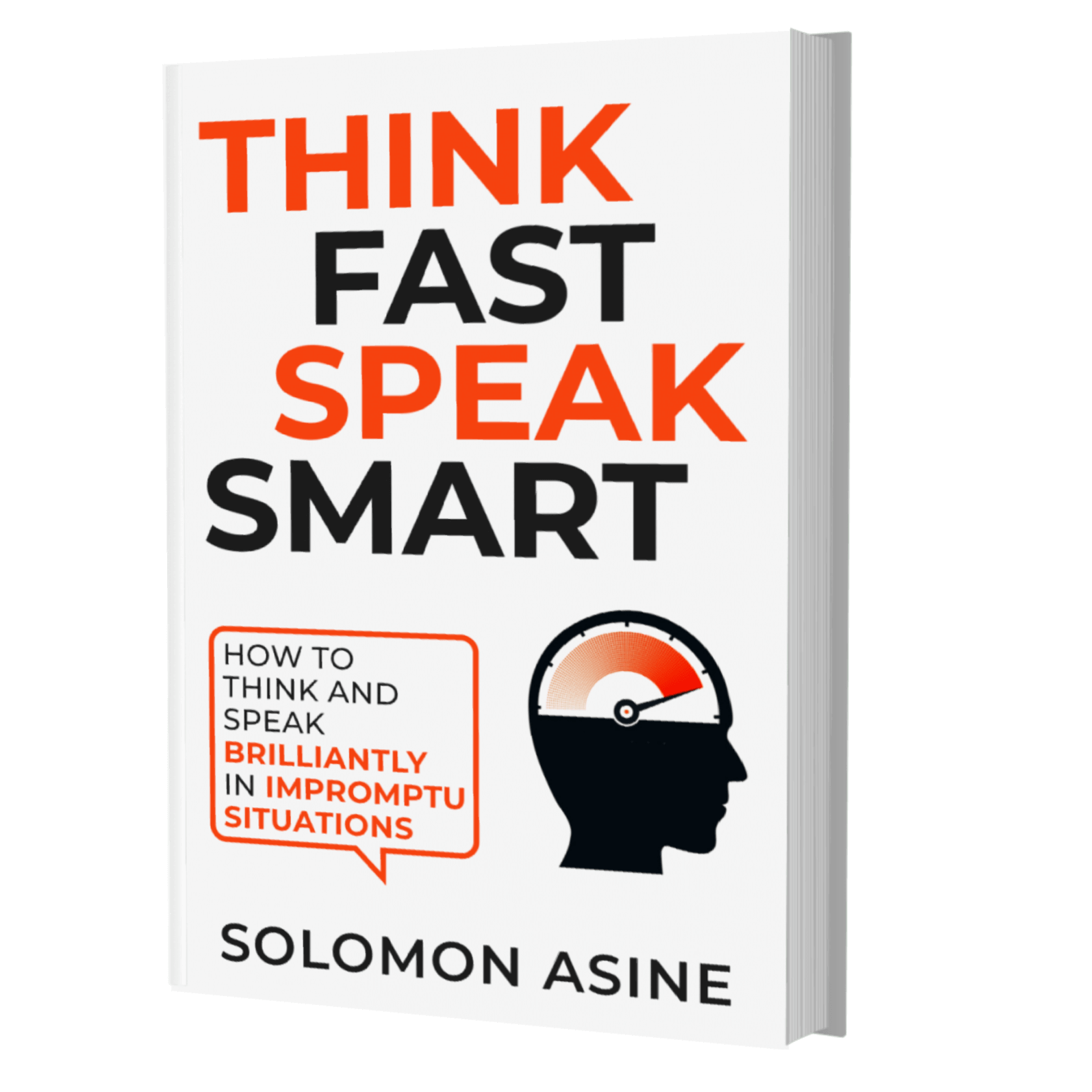
Leaving a Toxic Job: 10 Steps to Get Out
Have you ever found yourself stuck in a job that drains the life out of you? A challenging 9 to 5 job can be difficult
“The right word may be effective, but no word is ever as effective as a rightly timed pause.” These are the words of Mark Twain, an American writer and humorist.
One of the most powerful tools in the toolbox of an accomplished speaker is the pause. The strategic use of pauses can significantly increase the persuasive power and intensity of a speech—however, failure to use pauses effectively will affect the power of a speech. Hence, good use of pauses can be the factor that separates an average speech from a great one.
While it is not very practical to speak without pausing (that would be like reading a lengthy passage without punctuations), “thoughtless pauses” have little or no impact on the overall quality of a speech.
Strategic pauses have huge benefits in speaking, and how you use them determines how it impacts your presentation.
I’m going to highlight the benefits of pauses and some practical ways to master and use them strategically when you speak.
They give you time to think- Having pauses spread out throughout your speech, between your sentence, main points, certain words, give you time to think and put your thoughts together while you speak.
They calm your nerves- Nervousness does two things to a speaker; one, it makes you speak faster. Two, it increases the pitch of your voice (this reduces the authority in your voice and exposes your nervousness).
A good pause, coupled with a deep breath, can help calm your nerves, helping you speak slower with a more authoritative voice.
It portrays confidence- The truth of the matter is that it takes some level of confidence to look at your audience and pause. Your ability to use pauses effectively throughout your speech is a clear display of your confidence and authority.
It helps you get back on track- If you miss an important line or section of your speech, a good pause will give you that little window to think and get back on track.
Eliminate filler words- You know them; um, ah, so, you know, whatever. They are filler words. These words do not add value to your speech, in-fact they reduce the impact of your speech. A good pause can replace these filler words. Toastmasters is a good organization that can help you practice eliminating your filler words.
It helps convey emotion- There are certain speeches or section of your speech where you feel the need to make your audience feel a certain way or make them feel what you feel. You can achieve this with dramatic pauses (described below)
Helps your audience follow along- If you want your audience to follow along when you speak, then pause throughout your speech. Pausing is particularly important when your speech is technical or complex.
Restore the attention of your audience- This is important for longer speeches where the tendencies for the speaker to lose the attention of the audience are higher. A strategic pause can restore the attention of the audience.

Comma pause- This pause serves the purpose of a comma in your speech. Example:
“If a company fails to deliver on its promises[pause], it could lead to customer defection.”
Sentence pause– The sentence pause is used at the end of a sentence. It plays the role of a period or full stop. Technically, it puts a pause before and after every sentence. The sentence pause is longer than the comma pauses. Let’s consider the same example:
“If a company fails to deliver on its promises [pause], it could lead to customer defection[pause]” …
Main point pause/transition pause– This pause comes after the main point or a transition. It is typically longer than the sentence pauses. Example:
“There are three primary ways to grow your following on twitter. The first way is The Use of Hashtags [pause]…
Pause for emphasis- There are words, phrases, or sentences in your speech that you feel the need to emphasize. Emphatic pauses, coupled with pitch and volume, can be used to make these words, phrases, or sentences stand out and memorable. Example:
“He is a very respectful husband [pause] however [pause] he fusses when she fails to cook dinner.”
Sentence completion pause- This is a fill in the blank pause that helps to engage an audience. It requires the participation of the audience. This pause is used when a speaker begins a popular quote but pauses at the end for the audience to finish the statement. Example:
“When the going gets tough [pause]—–”
In this case, you expect your audience to respond with “…the tough gets going.”
Memory pause- Any pause within a speech that gives you a few seconds to recollect your thoughts is considered a memory pause.
Dramatic pause- When pausing build suspense and anticipation, it is considered dramatic. The anticipation magnifies the value and memorability of the message. There are multiple examples of dramatic pauses:
Example 1: When you observe a long pause before a speech, it not only helps you relax, center yourself and compose your opening thought, it also leaves the audience in anticipation for what you have you say.
Example 2: The pause after a question can be made dramatic. In this case, you use the pause to pique the curiosity of the audience. Example:
“We all know how audience analysis works, don’t we? [pause].
Example 3:
“And the winner is [pause]…”
This phrase is typical in award ceremonies, like the Oscars, Grammy, and the likes.
Example 3: I mentioned above that pauses can be used to convey emotions. Although the term “dramatic” might not be the best word to portray a genuine desire to make your audience feel what you feel, however, that is what it is.
Using lengthy pauses coupled with facial expressions, volume, and intonation to punctuate phrases can help transfer certain emotions to the audience. Example:
“even though the man begged for mercy [long pause] the mob kept lynching him [long pause]”
Punchline pause- A punchline can lose its maximum impact when you keep speaking just immediately after. There are two reasons why you need to pause after a joke. First, it could take a few seconds for your audience to catch the humor. Secondly, when an audience starts laughing, give them the privilege of absorbing the humor.
I believe you can judge from the above, the relevance of pauses when giving a speech. The question now is, how do you master the art of pausing when speaking? It takes intentional practice. Don’t try to use multiple techniques when you first start. For a beginner, I recommend you master one technique at a time, and soon enough, you will be delivering exceptional speeches by skillfully incorporating strategic pauses.

To empower you to cultivate a strong self-esteem that transforms your relationships and equips you to overcome life’s obstacles with resilience
New!!! Free Training Replay in...
Check out our latest articles. Boost your social intelligence

Have you ever found yourself stuck in a job that drains the life out of you? A challenging 9 to 5 job can be difficult

You can express yourself confidently without feeling shy or experiencing burnout. Here is how to exude confidence as an introvert. As an introvert, maintaining your

Anyone, including introverts, can live an interesting and fun-filled life. Here is how to be interesting as an introvert. Generally, many people believe that introverts

We sometimes wonder if going into a relationship with a fellow introvert is a good idea. I mean, won’t the relationship be as boring as hell? Maybe not really!

Are you ready to get out of your shell to start your dream business? Here is how to be an entrepreneur as an introvert and become successful!

As an introvert, you might be wondering if you really can become successful as a business owner. Read on to know how business success works for introverts.

Sign up for our mailing list and you will receive the first chapter free!
By signing up, you agree to our terms and privacy policy.
Warning: Apply The Methods in This Training Responsibly

Sign up for our mailing list and get the first chapter for free!
By signing up, you agree to our terms and privacy policy